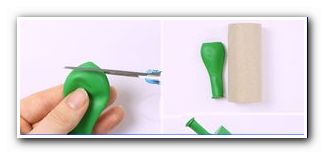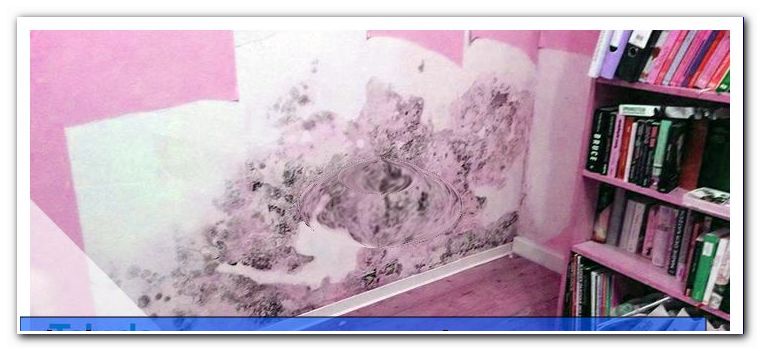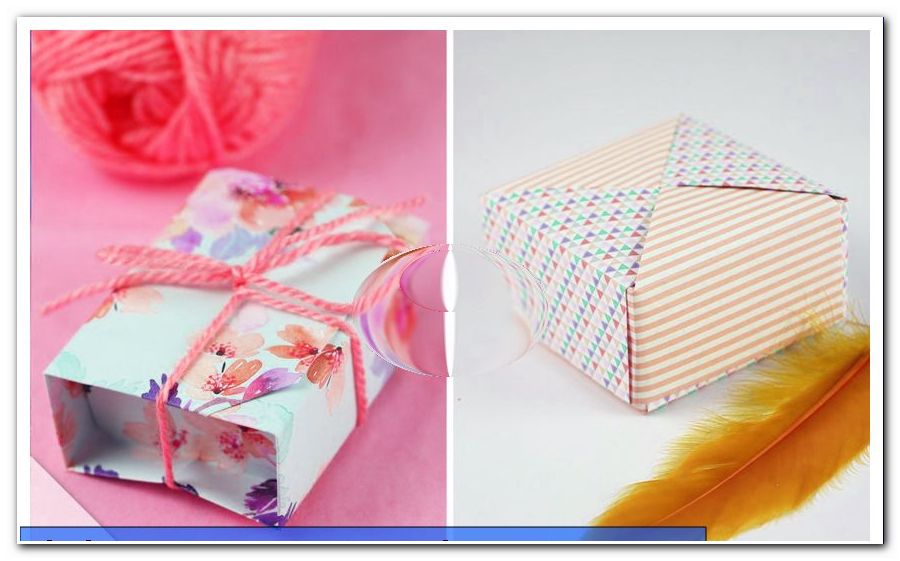Gypsum plasterboard and drywall profiles - dimensions, prices, types

- Components of a drywall
- Drywall profile types
- Plasterboard - Properties
- equipment
- Prices of materials
As the name suggests, a plasterboard or gypsum board has a gypsum core that has been plastered on both sides with a thin cardboard box. Although this makes plasterboard or plasterboard a light and easy-to-process material on the construction site, it does not really provide a building material for eternity.
The possibilities of laying plasterboard are particularly diverse. Initially, Rigips was mainly used in the construction of housing under the roof. Just the slopes under the roof can be well covered with plasterboard. Further possible uses are:
- Dress walls
- Disguise sloping under the roof
- Design blankets
- build new walls
- Install wall-mounted installations in damp rooms
As you can see, plasterboard can be used in a variety of ways. Therefore, you have to do some preliminary thinking before purchasing. In a wet room, other plasterboard panels are used than in a living room, so in that case you should use the special green plates for wet rooms. Then you have to consider whether you want to work alone, or have enough helpers. The large sheets are often cheaper over the square meter, especially if you need very large quantities.
Quick questions like:
- Which profile is to be used "> Components of a drywall
To create a drywall, you do not need much. Galvanized sheet steel profiles, plasterboard and screws are the basic materials. But there are big differences here, because not every plasterboard is designed for every application and not every profile is right for every construction project. The most important profiles include the U-profiles for floors and ceilings as well as C-profiles for walls and vertical struts in the middle. Below is a brief overview of the most important and most used components in drywall construction.
Drywall profile types
UW profile
U-shaped frame profile into which the CW profiles are inserted.CW profile
C-shaped stand profile, which is used in UW profiles to construct a wall. In the CW profile there are H-shaped cutouts, these are used for installation such as electrical cables.UA Profile
The UA profile is used as a door jamb stiffener profile to ensure a stable door construction for pre-wall installations.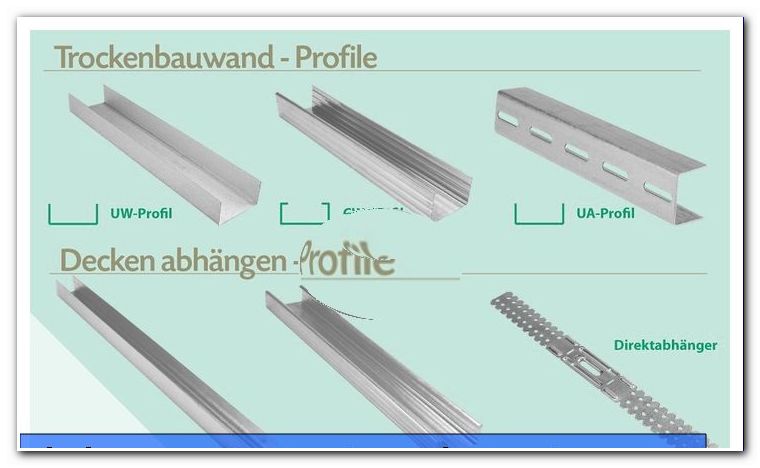
Hang profiles for the drywall and the ceiling CD profile
C-shaped profile, which is used for hanging ceilings.UD profile
U-shaped profile, which is responsible for the wall connection suspended ceilings.LW profile
L-shaped profile, which is used to construct corners.HAT profile
A profile that is used to cover wooden beamed ceilings.Door protection profile
A profile that is used when installing door openings.Corner protection profile
Free standing plasterboard corners are very sensitive. A hard push and the plasterboard may break at this area. To ensure optimum protection, they are used here for edge protection or corner protection profiles.Plasterboard - Properties
Plasterboard should always be used indoors only. When Rigips is applied to a place where steam or moisture often precipitates, the gypsum material absorbs moisture for a while. At the same time, microorganisms develop over time, which grow through the entire material from the inside. After a while, the microorganisms then show on the outside of the plates as mold. Therefore, in kitchens and living rooms around the window reveal at least the special green plates are to be used, which tolerate much moisture better.

The different plasterboard If the plasterboard wall is to be installed in a damp room such as the bathroom, then you should use the green sheets, which are especially suitable for damp rooms. You can also glue tiles on these boards later. For all other rooms the normal white panels are sufficient.
Standard plasterboard
Often, when installing plasterboard walls and ceilings, the standard plasterboard is used. This is a white 12.5 mm thick plate. Like all plasterboard, there are the standard plasterboard in various sizes. Commercially available plates are 1250-3000 mm long and 625-1250 mm wide. In addition to the 12.5 mm version, however, other strengths are available.
Impregnated plasterboard
The green impregnated plasterboard is also referred to as wet room panels. As the name implies, these panels are impregnated so they are more resistant to moisture than standard panels. So they are installed in wet rooms such as toilets and bathrooms. Also in the kitchen is due to the steam during cooking this plasterboard recommended.
Feuerschutzplatte
Special gypsum plaster boards are the brown colored fire protection boards, whose gypsum core was reinforced with glass fibers. As a result, an improvement in the microstructure stability is achieved when exposed to fire. Both fire protection boards and standard plasterboard panels are made of the same material that is non-combustible and flame retardant. Only the addition of glass fiber is the difference between the two plates. As a rule, fire protection boards are rarely installed.
Soundproof panels
Special gypsum plaster boards form so-called sound insulation boards, through whose cladding one can already reach a difference between 2-4 dB. If one uses special metal substructures for this purpose, another sound reduction of 4 dB can be achieved. By double planking, a sound reduction of up to another 10 dB can be achieved. However, these are only approximate values because the noise reduction varies from manufacturer to manufacturer. Good manufacturers achieve a reduction of up to 70 dB with their noise protection plates and the associated stator profiles.
Note: It should be noted that a noise reduction of 10 dB corresponds to a reduction of the perceived noise by half.
Plasterboard composite panel
Both the standard and the impregnated plasterboard are available as so-called composite panels. Composite panel means that thermal insulation made of styrofoam (EPS) is attached to the back. The advantage lies in the quick and easy processing during interior work.
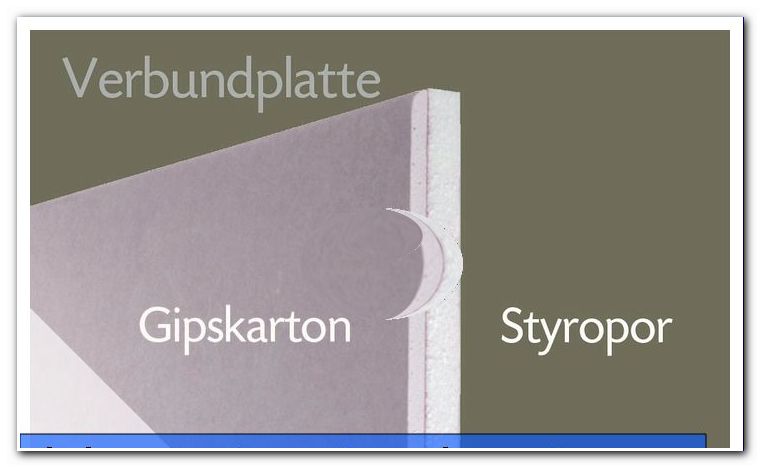
sandwich panel one-man panels
The so-called one-man plates are plasterboard, which have a customized width of 600 mm, so that they can hold a single craftsman. The lengths vary according to the standard dimensions. Small plates are also commercially available with the following dimensions: 600 mm x 1200 mm or 900 mm x 1200 mm. These are easy to transport and easier to handle as they are more manageable.
equipment
sealing tape
The sealing tape is a black, self-adhesive, approximately 5 mm thick tape, which is attached to the outside of the U-profiles. It serves both the insulation and the sound insulation.
mineral wool
Mineral wool serves as filling material in the drywall. Depending on the starting material, mineral wool consists of either glass wool, rock wool or slag wool. The mineral wool is used both for sound reduction and for heat protection, is non-flammable and has the property that it is open to diffusion. So water can not falter in the wall and start to mold. It is also said that the wall can "breathe". Another advantage is that mineral wool is easy to work with a saw blade. Due to many small fibers in the mineral wool you should wear gloves for processing, otherwise it can lead to itching problems. Mineral wool is available in different sizes and thicknesses.

insulation Drywall screws
Drywall screws are special screws that have a coarse thread to ensure a safe planking of plasterboard. The self-tapping thread makes it easy to screw the gypsum plaster boards together without the hassle of pre-drilling. The screw head is also kept very flat and almost flush with the plasterboard. The screw must be screwed into the gypsum plaster board surface so that it can be troweled afterwards.
But beware: If the screw is screwed in too far, there is a risk that the plasterboard will travel. To prevent this, it is recommended to use the safety clutch of the cordless screwdriver.

Drywall screw primer
After attaching the plasterboard and plastering, it is necessary to bring a deep primer on the plasterboard, because as beautiful as the properties of plasterboard, so sensitive is plasterboard against external influences. Plasterboard tends to absorb liquids such as paint quickly and unevenly when painting. In addition, UV radiation quickly ensures that plasterboard looks yellowish. Even when wallpapering you can easily and bad surprises with plasterboard experience, if you have not previously primed the plates. It can happen that when removing the wallpaper parts of the plasterboard are torn out, because the wallpaper adhesive has penetrated far into the plasterboard. To prevent this, plasterboard is primed.
Thanks to the primer, the suction behavior of the surface is greatly reduced, wallpaper glue can not penetrate deeply and the paint is able to dry evenly, without causing color deviations. Also, the hold of the materials on the plaster surface is improved. Another point is that both the surface, as well as the joint filler are compensated in the suction behavior, so that joints are visually no longer visible.
When using Tiefengrund, however, care must be taken to ensure that it is selected to match the color with which the plasterboard is painted (lime paint, silicate paint).
putty
To grout the gaps of the plasterboard one uses putty. This is pressed with a spatula in the joints. After drying, the slices are ground smooth with a grinder and fine sandpaper.
Prices of materials
 The dimensions of the plasterboard are given here in millimeters for simplicity. Most DIY stores and building materials dealers charge a square meter price. The below prices are catalog prices, many DIY stores have plasterboard at times significantly cheaper in the offer. So if you are planning a major renovation, you should start studying the week's offers early. So you can get some plates for well below three euros per square meter.
The dimensions of the plasterboard are given here in millimeters for simplicity. Most DIY stores and building materials dealers charge a square meter price. The below prices are catalog prices, many DIY stores have plasterboard at times significantly cheaper in the offer. So if you are planning a major renovation, you should start studying the week's offers early. So you can get some plates for well below three euros per square meter.Tip: Do not buy piecings or tile adhesive as ready-mixed. In the end, you pay for lugging a huge amount of water home. The product is in principle exactly the same, but can be dosed even worse. With the powdery adhesives, you always have the opportunity after a week to stick some plates again. The finished glue in the bucket can already have dry edges.
Prices:
- Standard plasterboards
- 9.5 mm thick x 600 mm wide x 2600 mm long - about 1.70 euros / square meter
- 12.5 mm thickness x 900 mm width x 1250 mm length - about 4.90 euros / square meter
- 12.5 mm thickness x 600 mm width x 1200 mm length - 3.80 euros / square meter
- Impregnated plasterboard
- 6.5 mm thickness x 900 mm width x 1250 mm length - about 5.30 euros / square meter
- 12.5 mm thickness x 600 mm width x 2000 mm length - about 4.90 euros / square meter
- 12.5 mm thickness x 600 mm width x 1200 mm length - about 6.70 euros / square meter
- Fire protection boards
- 12.5 mm thickness x 600 mm width x 2600 mm length - about 4.30 euros / square meter
- Binding tackle 10 kg sack - 6, 00 Euro
- Joint filler for Rigips for 5 kg - 9, 00 Euro
- Joint tape 20 m - 2.50 euros
Tip: Although the filler for gypsum boards in a large 25 kilo bag is often just as expensive as a small bag of five or ten kilos, you should only buy as much as you need. The rest, you have to dispose because the mass after a few months rock hard and then is no longer useful.
- Standard plasterboards







 The dimensions of the plasterboard are given here in millimeters for simplicity. Most DIY stores and building materials dealers charge a square meter price. The below prices are catalog prices, many DIY stores have plasterboard at times significantly cheaper in the offer. So if you are planning a major renovation, you should start studying the week's offers early. So you can get some plates for well below three euros per square meter.
The dimensions of the plasterboard are given here in millimeters for simplicity. Most DIY stores and building materials dealers charge a square meter price. The below prices are catalog prices, many DIY stores have plasterboard at times significantly cheaper in the offer. So if you are planning a major renovation, you should start studying the week's offers early. So you can get some plates for well below three euros per square meter.